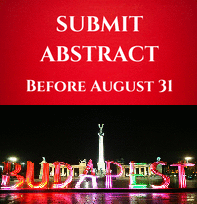
Hrvoje Gasparovic
University Hospital Rebro, Croatia
Title: Preponderance of microbial isolates among heart transplantation recipients requiring dialysis: A propensity score adjusted analysis
Biography
Biography: Hrvoje Gasparovic
Abstract
INTRODUCTION: Infections are an important source of morbidity and mortality among heart transplantation (HTx) recipients. Understanding the origins and predisposing conditions are critical for improvement of outcomes. Patients requiring renal replacement therapy (RRT) after HTx are particularly susceptible to infections.
METHODS: All 167 consecutive patients undergoing heart transplantation in a single academic center from January 2008 to December 2016 were screened for analysis. Patients with missing microbial data were excluded (N=9). The remaining 158 patients were dichotomized according to the need for periprocedural RRT. Twenty-seven patients required RRT (17%). Patients requiring postoperative RRT had lower preoperative creatinine clearance (53±21 vs. 62±21 ml/min, P=0.044), greater body mass indices (27±3 vs. 25±5, P=0.014) and were more likely to be diabetic (41% vs. 20%, P=0.026). Propensity score adjustment was used in order to account for multiple covariates (recipient age and gender, organ ischemic time, body mass index, pulmonary vascular resistance, creatinine clearance, duration of cardiopulmonary bypass, diabetes, preoperative and postoperative mechanical circulatory assistance).
RESULTS: The incidence of any positive microbial isolates among patients requiring RRT after Htx was significantly higher on unadjusted analysis (25/27 (93%) vs. 95/131 (73%), OR 4.77 [1.01-30.53], P=0.026). Patients requiring RRT had an increased susceptibility to positive microbial isolates from blood cultures (13/26 (50%) vs. 20/90 (22%), OR 3.50 [1.28-9.67], P=0.012). Propensity score adjusted analysis corroborated the significant difference for positive blood cultures (OR 3.97 [1.28-12.32], P=0.017), while the incidence of total microbial isolates was just below the level of statistical significance (OR 4.55 [0.90-23.05], P=0.067).
CONCLUSIONS: We have shown that patients requiring early RRT following HTx had an increased susceptibility to infections via various portals of entry, predominantly due to an increase in blood borne infections. Understanding the underlying conditions leading to infection-related morbidity is paramount in infection control and prevention

